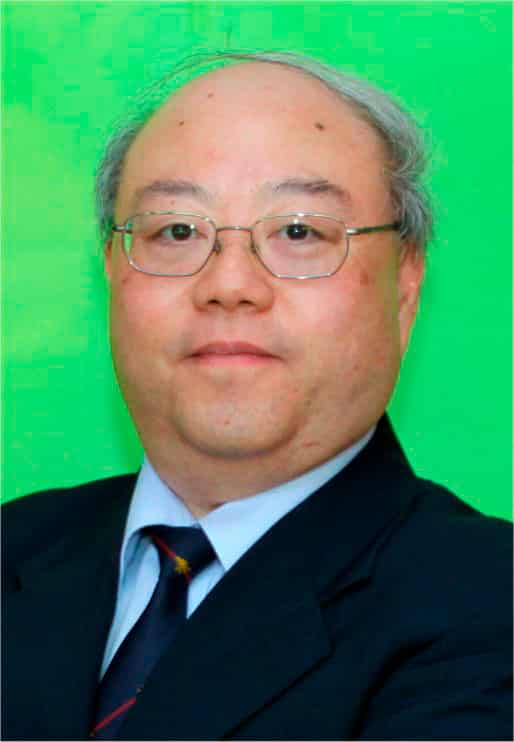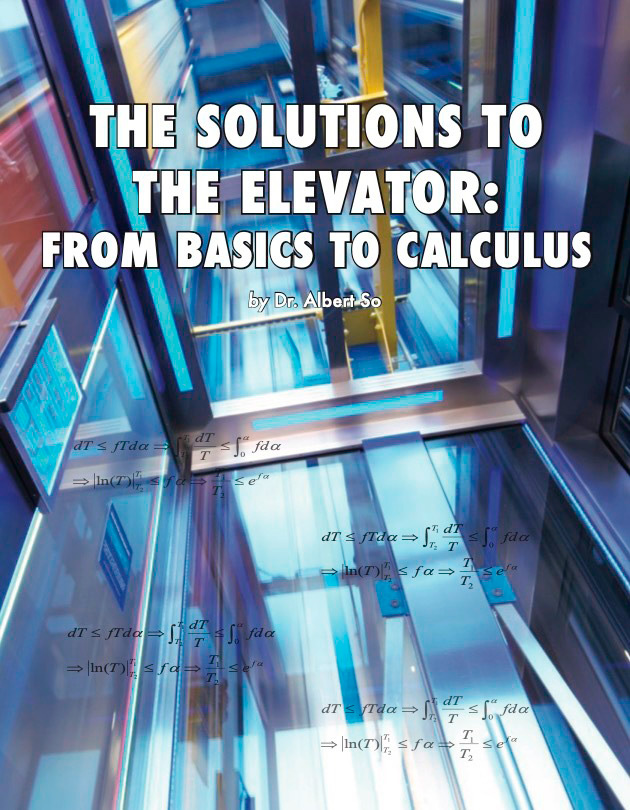The author expands on his previous book meant to promote an undergraduate program in VT engineering.
In 2019, Dr. Albert So authored The Elevator: From Basics to Calculus: Motor Control; Ropes and Traction; Traffic Analysis, which was published by Elevator World, Inc.. The motivation, So said, was to fulfill a need for the vertical-transportation (VT) industry: support for a new Bachelor of Science degree in elevator engineering. It was presented as both a textbook and reference book for undergraduate and postgraduate programs for the elevator industry which currently are, So acknowledged, “very rare around the world.” The target audience is junior- and senior-level engineering students following a course of study in elevators embedded in a degree program in mechanical, electrical or mechatronic engineering.
In the first book, the mathematics focus mostly on simple calculus, but also high school algebra and geometry, and much of the subject matter was illustrated by artwork to simplify its concepts. This new book, The Solutions to The Elevator: From Basics to Calculus, looks at the same three sections — “Motor Drive and Control,” “Ropes and Traction” and “Traffic Analysis,” each of which is divided into four chapters — to provide suggested answers to the learning enforcement questions posed at the end of each chapter of the previous volume. There are 10 of these questions at the end of each of the 12 chapters in the original book, and So was motivated to write Solutions as a tutorial to offer suggested answers to the 120 questions. These questions, some descriptive and some mathematical, may have more than one potential solution, So points out, adding that readers of the original book should try different answers.
For the most part, Solutions does not cover information not found in The Elevator. It is a companion volume not meant to be read on its own, so users must have read the original book (though in many instances contents of the first book are included in Solutions to reduce the reader’s need to constantly refer between the two books). The mathematical skill level is the same for both volumes, so the new book does not go beyond differential equations of the second order. Readers of the first book will find the new volume of interest with its inclusion of a few questions that were not included in the original, as well as some new material meant to enhance the user’s knowledge.
Solutions is laid out logically and easy to follow. Each question is posed in the same way it was in The Elevator, and in the same order. Just as he did in the first volume, So enhances many of the answers with graphics, formulas and photographs that help illustrate his points. Of particular utility are diagrams of electrical systems, such as motor circuits that are taught in general electrical engineering classes. For example, inclusion of a diagram of an equivalent circuit of a DC motor provides a visual explanation that can be used to help answer multiple questions.
The Elevator was written to offer the student an introduction to topics that are often found in various professional writings but are usually difficult to grasp. So felt like it would be helpful to present answers to the 120 questions in a concise companion publication. For engineering students, study of both of these volumes can potentially open the door to the VT industry. These books are sufficient to be developed into one module of a degree program, while expansion of the three sub-topics could create three more modules. So plans to expand The Elevator “to cover more areas and depth.” He continued, “Together with extended topics of the old book, I am targeting the launch of a degree program in the future.”
Solutions, just as The Elevator, is available in electronic format at Elevator Books. The books are offered individually or as a package.
About the Author

Dr. Albert So is an executive board member and scientific advisor of the International Association of Elevator Engineers (IAEE) and a member of the technical committee for the International Elevator and Escalator Symposium. He is also the academic secretary for the IAEE HK-China Branch and honorary visiting professor of the University of Northampton in the U.K. He serves on the Technical Advisory Group of Elevator World, Inc., and is based in Seattle.
Get more of Elevator World. Sign up for our free e-newsletter.










